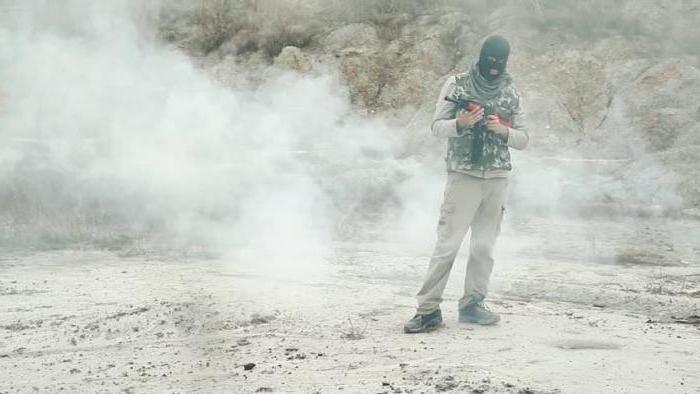Acts that have signs of an offense, but aimed at eliminating the danger that poses a threat to society or the state, are not a crime. Such measures are considered by law as an emergency. Its provisions and norms are included in the criminal law of most developed countries, including the Russian Federation.
The concept
The extreme need is a situation of conflict between the two parties, in which the protection of the interests of one occurs in the inevitable violation of the rights of the other. In contrast to self-defense, which assumes the defense of personal interests, measures are observed here aimed at protecting society and the state.
It follows from the definition that a citizen, defending one right, violates another. Obviously, the consequences are harmful to the unprotected side. It can be caused both by the active actions of the intruder, and the lack of any measures.
Example: two patients come to the doctor. He cannot begin to save both and is forced to give preference to one of them.
In this case, there is a clash of duties, of which only one is to be performed. Saving the life of one patient, the doctor is inactive in relation to another victim, violating his rights. This situation is assessed as an extreme need and is not considered a crime.
Grounds
In order to avoid an offense, certain conditions must be met in the actions of a person. The extreme need is justified in the cases presented below.
- The danger must be real, without the possibility of its timely prevention. If the threat is future, you can only use preventive and preventive measures. The passing threat is also not a reason for such an action. Extreme need implies that everything happens here and now.
- If there is a danger from natural disasters or other natural phenomena, faulty equipment, animals or diseases, then extreme measures are considered justified. If a citizen himself creates a threat to society, and then independently eliminates it, punishment is imposed only in the case of intentional harm to others.
- Causing harm is legal only if there were no other ways to solve the problem. If there were any, then criminal liability is not excluded.
- The actions of the person should not be exceeded. Extreme need implies a prerequisite - the damage caused should be much less than prevented. Equal acts of harm are regarded as a crime.
Legislation
The concept of "extreme necessity" is found in the Code of Administrative Offenses (CAO RF) and the Criminal Code.
In accordance with Article 2.7 of the Code of Administrative Offenses, actions aimed at preventing dangerous situation and saving people by breaking the law, but deemed necessary, is not considered an administrative offense.
Article 39 of the Criminal Code defines the concept of extreme measures (part 1) and the definition of exceeding the limits of permissible (part 2).
There are no special rules governing the liability of violators who have exceeded necessary actions. Therefore, such a violation is considered in accordance with the articles of the Special Part of the Criminal Code.
It is important to note that the excess of permissible measures is considered a mitigating circumstance in accordance with the first part of Article 61 of the Criminal Code of the Russian Federation (paragraph "g").
Types of threats
Reasons for causing harm may cause various kinds of circumstances.Extreme need may arise in several cases.

- Man-made danger. Malfunctions with machinery, equipment or vehicles.
- Elemental threat. The avalanche, fires, floods, earthquakes and other natural phenomena that pose a danger to the life and health of people, property or public activities.
- Human physiological processes. This category includes diseases and childbirth. For example, in the case of complicated birth of a child, the doctor has to make a choice between the life of the mother and the baby.
- Threat to innocent citizens coming from a person committing illegal actions.
- Provocation of necessary measures caused by negligence. If the purpose was to intentionally inflict damage on the public, criminal or administrative liability is provided for in accordance with the law.
- The totality of circumstances.

Degree of harm
The concept of "extreme necessity" is accompanied by the inevitable harm to third parties, which usually have nothing to do with the situation. The damage caused by the offender should be less than the consequences of the avoidable danger. Comparing the degree of harm done, two factors are considered:
- quantitative nature (amount and cost of damage);
- quality indicator (property damage, damage to health).
The law does not have such a thing as the least need. An extreme measure is taken by a person in an emergency when it is necessary to take an operational decision. Often the order of actions is formed in a stressful situation, with a lack of time or the necessary information. Therefore, the choice of the best option is subjective and not evaluated when passing a sentence.
The exception is situations in which the offender intentionally or knowingly made a decision to cause harm or damage to third parties.
Who is entitled to take extreme measures?
Any citizen can become the subject of the law, regardless of age, gender, profession. Participation in the elimination of public danger is not an obligation. Representatives of some professions not only have the right to use the law, but also must take actions that cause harm while preventing greater danger.
 For example, a case is known in history when a train driver had to crash into a car crossing railway lines in order to save public transport passengers. In case of emergency braking, the locomotive would roll over, which could lead to a crash. The court recognized that the actions of the driver are an urgent need. The Russian Federation supports its citizens in such situations, ensuring safety and compliance with laws in relation to them.
For example, a case is known in history when a train driver had to crash into a car crossing railway lines in order to save public transport passengers. In case of emergency braking, the locomotive would roll over, which could lead to a crash. The court recognized that the actions of the driver are an urgent need. The Russian Federation supports its citizens in such situations, ensuring safety and compliance with laws in relation to them.
Causing death as a last resort
The possibility of depriving a person of life in emergency conditions is controversial and is considered individually. Murder is considered an unacceptable act and involves criminal liability. Extreme need is a powerful argument for the indulgence of the court and is considered a mitigating circumstance. If it is proved that the death of the victim was unintentional, and the offender did not expect such an outcome, then “careless killing” will go unpunished.
The death of one person is legally justified when it is able to save the lives of many. Sometimes it is necessary to sacrifice the lives of several innocent victims in order to save more people. So, when releasing the terrorist school in Beslan, it was necessary to use extreme measures that resulted in the death of about a hundred hostages. However, more than 700 people were saved. Fortunately, such cases are exceptional and extremely rare.
Excess measures
The decision to take emergency measures requires prerequisites. Extreme need should not cause more damage as a result of unlawful actions than could be in the event of inaction.If the harm inflicted is proportional or larger than the repaired, they speak of excess actions.
Actions that are clearly inconsistent with the level of threat, overly active attempts to save, significantly caused damage are the most common signs of excess. Extreme need, even in the case of a mistake, is not a crime, and the violator is not responsible for his actions. The exception is situations in which a person exceeds emergency measures intentionally or planned.
Mistakes
There are several common mistakes related to excess actions that are encountered in legal practice.
- Error about the presence of a threat. If a citizen took emergency actions in situations that do not imply a danger to others, the question of responsibility is resolved. In cases where the offender did not have the opportunity or time to objectively assess the situation, the act remains unpunished.
- Misconceptions regarding the nature of the hazard. If the person’s actions are beyond the permissible, the case shall be considered in accordance with part 2 of article 39 of the Criminal Code of the Russian Federation.
- Imaginary protection. Both personal and third-party defense are assessed. The extreme need in case of a mistake is an unpunished act, if the citizen did not have a real opportunity to assess the situation, or the actions were committed in a state of emotional shock. If it was possible to foresee the consequences in advance, then the offense is recognized as harm by negligence.
- Perceptions of the extent of the threat being averted. If the damage is greater than the prevented, they say about the error. But the offender does not bear criminal liability even if his actions did not lead to the elimination of the danger.
Thus, emergency measures do not imply punishment for the offender. An important condition for innocence is the inappropriateness of the violation of the rights of third parties.










